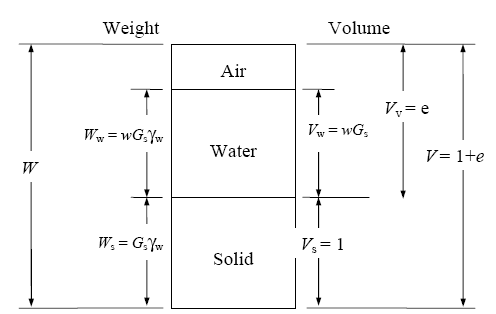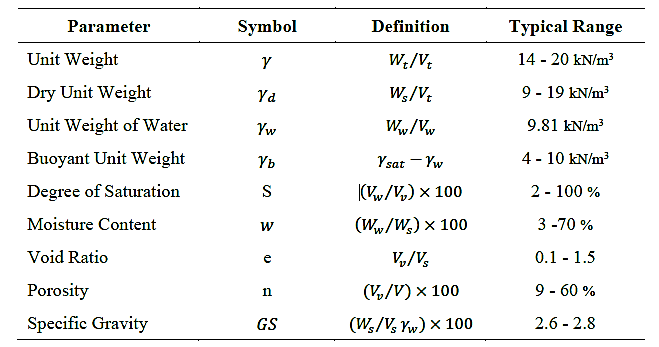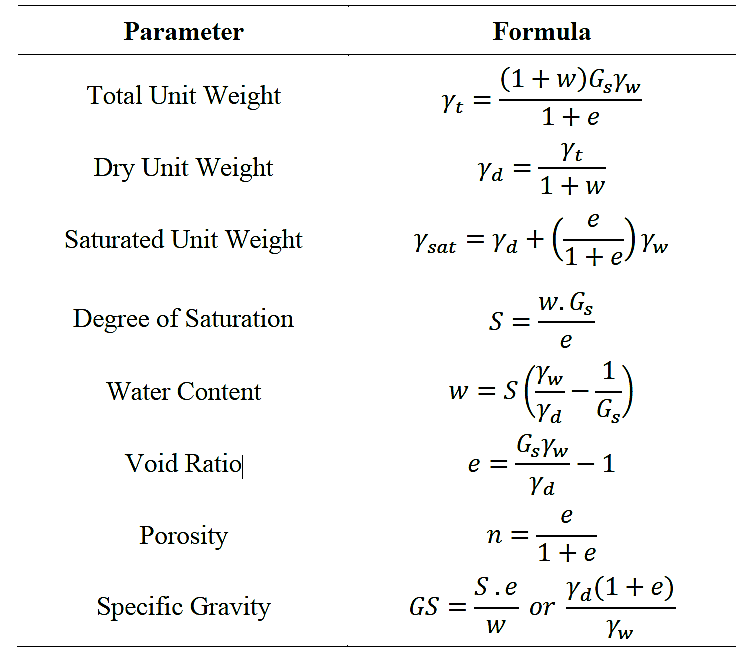

|
Read More
Date: 14-1-2023
Date: 2023-02-25
Date: 29-1-2023
|
The soil is particulate materials which can contain all three phases of matter (solid, liquid, and gas). The solid portion represents actual soil’s particles, while the liquid and gas portions represent voids existed between soil’s particles. The interaction between these three phases can be illustrated and described using a “Phase Diagram”, see Figure 1.

Figure 1- Three Phase Diagram
Common soil parameters used to define the relative portions in a soil mass are summarized in Table 1.
Table 1: Common Soil Weight-Volume Parameters and their Typical Values

Several formulas were developed to express the relationships between weight-volume parameters of the soil. The following table summarizes the most common relationships used in the foundation engineering:
Table 2: Common Soil Weight-Volume Relationships

|
|
|
|
لخفض ضغط الدم.. دراسة تحدد "تمارين مهمة"
|
|
|
|
|
|
|
طال انتظارها.. ميزة جديدة من "واتساب" تعزز الخصوصية
|
|
|
|
|
|
|
مشاتل الكفيل تزيّن مجمّع أبي الفضل العبّاس (عليه السلام) بالورد استعدادًا لحفل التخرج المركزي
|
|
|